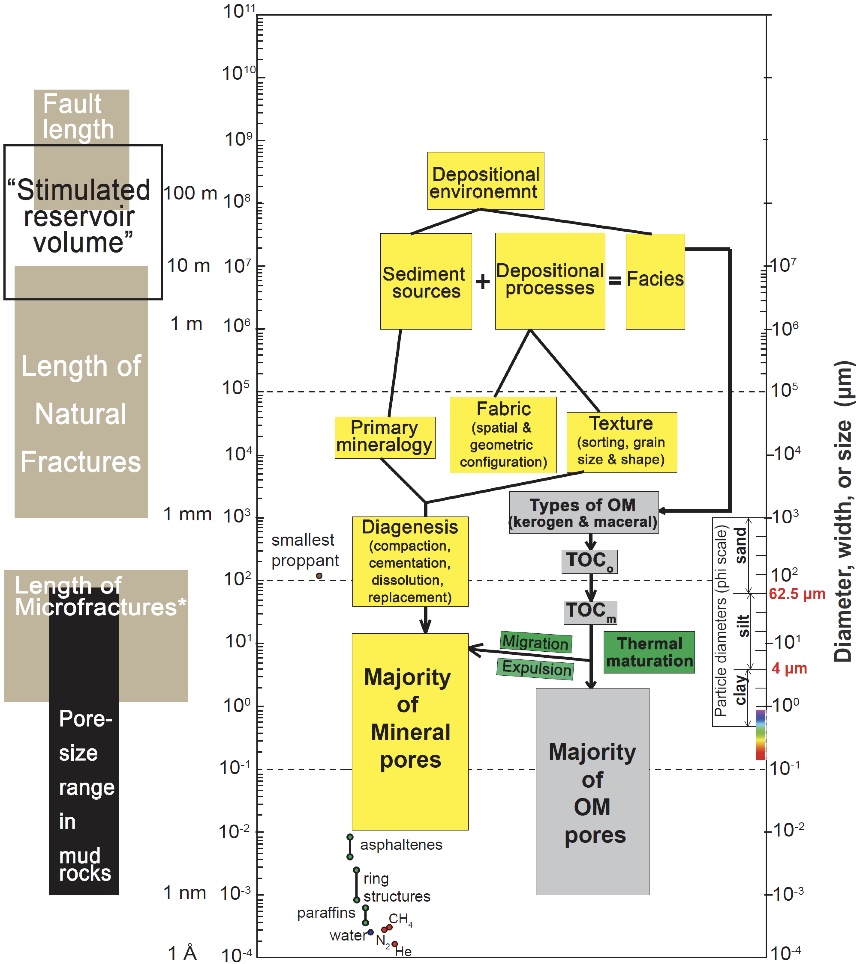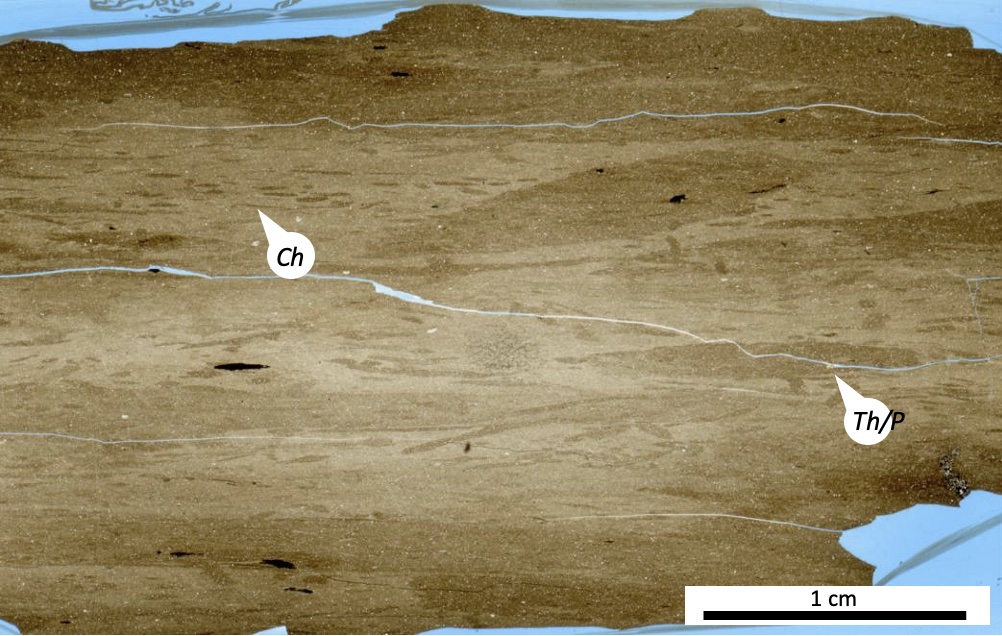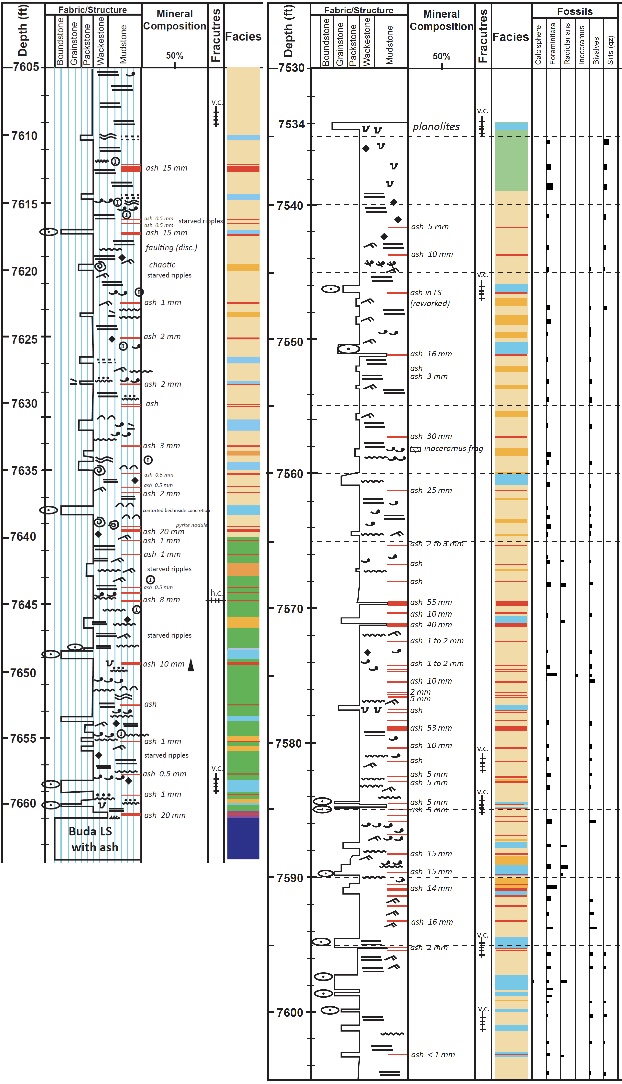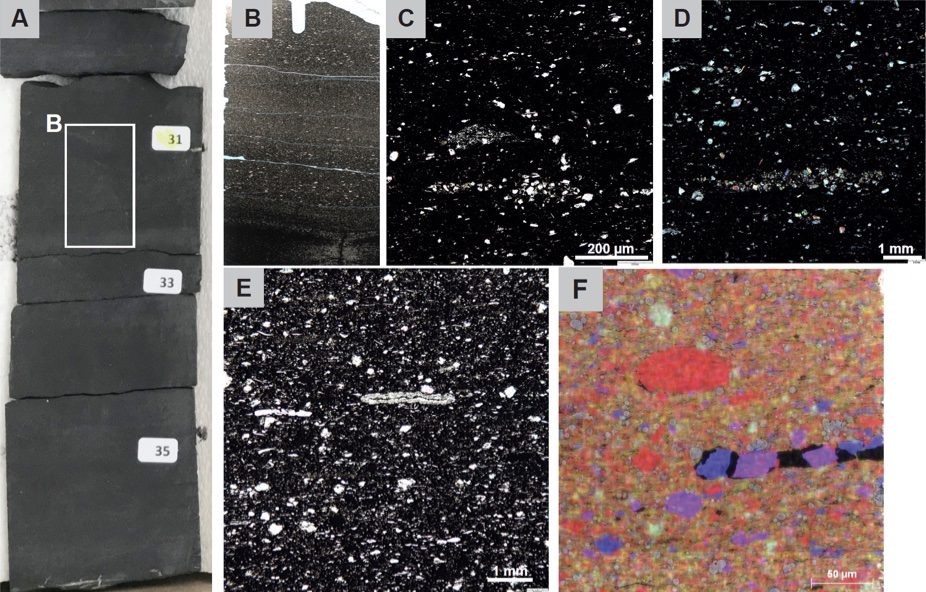Lucy Tingwei Ko
About Lucy Tingwei Ko

Dr. Lucy Tingwei Ko is a research associate at the Bureau of Economic Geology. She received her B.Sc. and M.S. degree in Geosciences (with a specialization in organic geochemistry) from the National Taiwan University in Taipei, Taiwan. She then received her second M.S. degree (with a specialization in organic and isotope geochemistry) in Geology from the Colorado School of Mines and her Ph.D. in Geological Sciences from The University of Texas at Austin. Before moving to Texas, she worked as a geologist at a basin modeling company.
Lucy started her career as an organic geochemist, using biomarkers to understand the effect of clay minerals on secondary migration-related compositional fractionation. She also used gas isotopes, gas compositions, and biomarkers in the laboratory (hydrous pyrolysis) and several tight-gas fields to further understand the possible migration and filling of the gases in the tight-gas basins in the Rocky Mountain region. After joining the graduate program at the Jackson School of Geosciences, she decided to switch her career focus from geochemistry to mudrock petrography, sedimentology, and stratigraphy, linking fundamental process-driven mechanisms to predict reservoir quality and properties in unconventional systems. She completed two internships at ConocoPhillips in Houston, TX, where she gained familiarity with fluid-inclusion techniques, PVT and fluid properties, and basin modeling. These experiences have helped her assemble a more complete picture and understanding of the subsurface fluid and rock system.
For the past 10 years, during her Ph.D. and postdoc, Lucy has been working in the Mudrock System Research Laboratory Group (MSRL) at the Bureau of Economic Geology in advanced mudrock research with respected sedimentologists, stratigraphers, and petrographers–including Drs. Robert Loucks, Stephen Ruppel, and Kitty Milliken. At the Bureau, Lucy has conducted independent and integrated studies and has expanded her knowledge and application to digital mudrock and machine learning. Her recent work in Mesozoic shales in the Alaska North Slope shed new light on mudrocks deposited in polar regions. She is now a full-time research associate at the Bureau, working in both the MSRL and STARR (State of Texas Advanced Oil and Gas Resource Recovery) groups. She has also contributed to various industry associate programs and research groups, including MSRL, STARR, the Reservoir Characterization Research Laboratory (RCRL), and the Tight Oil Resource Assessment (TORA) group.
She continues to gain experience by working on mudrock sedimentology and geochemistry in various geological settings and ages. In addition, she has begun research on the petroleum system aspect of the conventional system, particularly the siliciclastic-carbonate mixed Pennsylvanian Strawn Group.
By utilizing techniques and concepts from several disciplines of geology, Lucy is a true integrator. This unique perspective has helped her establish an in-depth understanding of lithological and geological controls on geochemical parameters and fluid properties. Her career goal is to study mudrocks in different depositional and tectonic settings to define their depositional continuity, diagenesis, and to decode their past and current environmental implications at regional and global scales.
What are your current research activities?
The majority of my research focuses on reservoir characterization, including describing slabbed cores, thin sections, and SEM images, mostly on Paleozoic and Mesozoic mudrock formations. Characterization includes qualitatively and quantitatively describing sedimentary structures, grain texture and composition (mineralogy), bioturbation, identifying fossils, diagenesis, fabric, and organic matter occurrence and type. I also used open-system pyrolysis (HAWK) to measure maturity, OM type, and TOC on shales and mudrocks, as well as used high-resolution XRF-derived elemental data to interpret the paleo-depositional environment using concentrations and/or ratios of major and trace elements.
My most recent research has been and will be concentrated on two overarching projects:
- The Bureau STARR program has recently partnered with an operator, BKV Barnet, in the Fort Worth Basin, focusing on improving the regional understanding of Mississippian Barnett Shale with respect to lateral and vertical heterogeneity. The study area sits mostly in Wise and Denton County, TX. To address the operator’s goal of optimizing hydraulic simulation, with emphasis on infill drilling and refract, and in the context of reservoir properties, STARR researchers, including Dr. Qilong Fu, Dr. Rob Reed, and myself, will conduct a multiyear geological study to help refine depositional and petrophysical models. Phase 1 includes studying 5-key-cored wells of interest (4 dry gas wells and 1 condensate well). I will describe the cores to determine mappable and/or key lithofacies and link other properties such as OM type, TOC, maturity, mineralogy, diagenesis, and mechanical properties to the facies. In addition, chemofacies will be used to interpret paleo-oceanographic conditions during the Barnett deposition. Other Bureau researchers like Dr. Julia Gale with the Fracture Research and Application Consortium (FRAC) and Dr. Bob Loucks (RCRL and STARR) will also be involved in this collaboration.
- The MSRL previously focused on gaining regional understanding of the Upper Cretaceous Eagle Ford Formation in South Texas. The regional diagenesis study of the Eagle Group has wrapped up and will be published soon. The study focus is now related to the Bone Spring, Spraberry, and Wolfcamp Formations in both the Delaware and Midland Basins. In the northern Delaware Basin, we will be working with a few operators to understand the distribution and possible sources and causes of hydrogen sulfide (H2S). In the southern Delaware Basin, I am working on improving our understanding of the reservoir quality of the Bone Spring and Wolfcamp Formations. I am working with regional stratigraphers Buddy Price, David Carr, and Robin Dommisse, in RCRL, TORA, and STARR, to understand the geological process and controls in changes in reservoir quality and heterogeneity. The time equivalent Spraberry, Dean, and Wolfcamp Formations on the Midland Basin side continue to be research focuses as well.
What excites you the most about your current research?
No doubt, my answer has always been that integration excites me the most. As a geologist and geochemist, finding the connection between two knowns and being able to connect the dots between or among ideas excites me a lot. I love to be challenged. Beyond multidisciplinary integration, I love being able to look at rocks almost every day. The Austin Core Research Center (CRC) is located next to the Bureau. As researchers, we are lucky to have access to thousands of feet of subsurface cores and cuttings throughout Texas, the U.S., and even internationally. It is the fortune of a lifetime to be able to work on many donated and loaned core materials and work with world-class experts across many subdisciplines throughout the entire Jackson School of Geosciences and also more broadly within the geoscience field as a whole. My last but not least important answer is the constant interaction we have with industry partners. The Bureau of Economic Geology is located within driving distance to Houston and Midland (the Permian Basin). We have many opportunities to meet and interact with operators in person, brainstorm, and discuss their immediate needs for research and application.
What is the desired outcome of your research?
Hundreds and thousands of years of earth history are recorded within mudrocks and/or fine-grained rocks and sediments. Studying these rocks in detail sets a foundation for subsequent advanced analysis and interpretation. These rocks serve as windows for us to peek through to the past climate and environment and enable us to link local to global scale events through earth history. On the application side, mudrocks are sources and seals for conventional oil and gas reservoirs; seals for storage of natural, renewable, or waste resources (nuclear waste, carbon dioxide [CO₂], hydrogen [H₂], etc.); and sources and reservoirs for unconventional oil and gas exploration. Our understanding of mudrocks is just beginning, and there is a lot more to be investigated and understood.
What do you need in order to make your research efforts more successful?
Our research scope, scale, and quality rely heavily on the cores available to us and the quality and quantity of the data provided to us by our industry sponsors, partners, and publicly available sources.
Today’s industry faces many challenges related to increased concern around the environment (a low carbon future) and sustainability. The challenge is to meet the needed energy supply in an affordable manner while also addressing environmental concerns. Professional geoscientists tackle these real-world problems daily and not only have the most critical understanding of these issues but also possess a great deal of useful data. Research efforts can be more impactful and successful by working with professional geoscientists.
What are your latest papers/publications, and what is most exciting about them?
Davletshin, A., L. T. Ko, K. L. Milliken, P. Periwal, C.C. Wang, and W. Song, 2021, Detection of framboidal pyrite size distributions using convolutional neural networks: Marine and Petroleum Geology, v. 132, doi:10.1016/j.marpetgeo.2021.105159.
In the past two years, I have been working with two Ph.D. students from the Department of Petroleum and Geosystems Engineering as well as the Department of Geological Sciences, Jackson School of Geosciences to automate grain and pore detection in thin section and SEM images using convolutional-neural networks. In both collaborations, I provided a robust geological training dataset and knowledge while the students excelled at machine learning techniques and applications. The result is encouraging and exciting, and we believe the collaboration should continue in order to apply it to different areas in the geological sciences, especially petrography. This paper was just recently published.
Ko, L. T., 2019, Facies, depositional environments, chemostratigraphy, and reservoir quality of the Middle Devonian Marcellus Formation, Appalachian Basin, northeastern Pennsylvania: Houston Geological Society Bulletin, v. 62, p. 25.
This paper represents my first independent research, which uses integrated sedimentology, petrography, chemostratigraphy, and pyrite-framboid size distribution to unravel the changes in redox, sedimentation rate, and basin evolution of the Appalachian foreland basin during the Middle Devonian period. These fundamental geological controls were then tied to reservoir quality (OM type, TOC, mineralogy, diagenesis, porosity, and permeability) of the Marcellus Formation.
Ko, L. T., S. C. Ruppel, R. G. Loucks, T. Zhang, P. C. Hackley, and D. Shao, 2018, Pore-types and pore-network evolution in Upper Devonian-Lower Mississippian Woodford and Mississippian Barnett mudstones: Insights from laboratory thermal maturation and organic petrology, International Journal of Coal Geology, v. 190, p. 3–28, doi:10.1016/j.coal.2017.10.001.
Ko, L. T., R. G. Loucks, K. L. Milliken, Q. Liang, T. Zhang, X. Sun, P. C. Hackley, S. C. Ruppel, and S. Peng, 2017, Controls on pore types and pore-size distribution in the Upper Triassic Yanchang Formation, Ordos Basin, China: Implications for pore-evolution models of lacustrine mudrocks: Interpretation, v. 5, p. SF127–SF148, doi:10.1190/INT-2016-0115.1.
These two papers were published as part of my Ph.D. The first paper was able to visibly show the differences in kinetics during thermal transformation of various kerogen (maceral) types and that the results are tied closely to pore evolution with regard to hydrocarbon generation and expulsion. The second paper presents the innovative approaches that quantitatively describe sorting and grain size distribution of lacustrine mudrocks and how sorting and grain size affect pore size and shape.
Who will benefit from your latest paper or publication?
Geologists, geochemists, petrophysicists, and engineers would all benefit from my publications. Energy companies with exploration and production operations in the U.S. Permian Basin, the Appalachian Basin, the Rockies, and Gulf Coast unconventional plays would also benefit, as well as oil and gas companies with conventional plays that need a better understanding of sources and seal properties; carbon capture utilization and storage (CCUS) projects; and residual oil zone (ROZ) enhanced oil recovery (EOR) projects in conventional reservoirs.
What was your most exciting paper or publication, and why?
Ko, L. T., R. G. Loucks, H. Rowe, R. Adrianes, and G. Mertens, in prep, Mudrock diagenesis with depth and thermal maturity and how it impacts petrophysical and mechanical properties in the Upper Cretaceous Eagle Ford Group.
This paper summarizes a regional diagenesis study of the Upper Cretaceous Eagle Ford Group in the Gulf Coast Basins. We collaborated with Gilles and Rieko at Qmineral, who recently won the champion for the Reynolds Cup (world cup for mineralogy). In this study, we presented diagenesis related to burial, paleo-redox, and volcanic activities and alteration. The results show how diagenesis changes rock and fluid properties in the subsurface and how this can be used to measure petrophysical and mechanical properties.
Ko, L. T., I. Yurchenko, P. Periwal, G. Mertens, and C. Lampe, in prep, Petrography of source and seal mudrocks in the Alaska North Slope and their implications on OM types, quality, depositional environment, and diagenesis.
This manuscript demonstrates the power of mudrock sedimentology in basin modeling and source rock quality. It also adds important pieces of information on the regional deposition environment during the Mesozoic era in the polar region, which is significantly understudied in comparison to its more tropical counterparts.
Ikeda, K., L. T. Ko, and C.C. Wang, in prep, Machine learning, convolutional neural network application in pore identification in shale SEM images.
In this study, my colleague and I successfully applied machine-learning techniques to capture pore systems from the producing oil window to the dry gas window. With the machine learning tool, we can understand the pore system and associated fluid flow better.
Who are the types of research partners you are seeking, and what skills or expertise could be of benefit to your research?
The skills required to understand mudrock systems are numerous and profound. I will list just a few examples here, but it is by no means complete:
- Experts in deep-water siliciclastic systems
Mudrock deposition is part of the source-to-sink system in the siliciclastic world. There is always more to be learned from shelf to deep-water siliciclastic studies, which can be applied to these finer-scale mudrocks. - Carbonate and siliciclastic stratigraphers/biostratigraphers
Applying sequence stratigraphy to deep-water mudrock systems can be tricky and challenging, but it is not impossible to do. Chemostratigraphy, biostratigraphy, and depositional processes could be the key to identifying flooding surfaces and sequence boundaries in mudrocks. - Experts in mixed siliciclastic and carbonate systems
Many mudrocks are deposited in areas as mixed siliciclastic and carbonate rocks. Thus, understanding the carbonate depositional system and mixed systems is also critical. - Inorganic and organic geochemists or organic petrographers
Geochemical evidence and data are essential in reconstructing the paleodepositional environment and gaining a better understanding of the conditions of mudrock deposition. - Experts in seal capacity and continuity
Sealing capacity is a risk for conventional reservoirs and/or any kind of subsurface reservoirs. Much of the seal is composed of mudrocks, so it is important to understand both the sealing capacity and sealing continuity. - Geomechanical specialists
A good handle and understanding of the geomechanical heterogeneity and anisotropy of mudrock systems is important in developing unconventional systems as well as areas in CCUS, hydrogen, geothermal, etc. Regional stress and pore pressure is also important and will affect reservoir quality significantly. - Petrographers and diagenesis specialists
Due to the fine-grained nature of mudrocks, it has become routine to describe and study them using light or electron microscopes. Therefore, the ability to qualitatively and quantitatively characterize grains and pores is a necessity.
What are the desired relationships, expertise, or skills that could be brought in to benefit your research?
Partnerships with oil and gas exploration and production companies that are able to share field data and core materials are very beneficial to my research. Collaborative research with geologists, geochemists, geophysicists, petrophysicists, and engineers at these companies always leads to the improvement of our research quality and scope.
Experiences and/or participation in the Integrated Ocean Drilling Program and the Ocean Drilling Program will also benefit my research as many of the modern fine-grained sediments on the ocean floor share common characteristics with mudrocks from the Paleozoic to Mesozoic and can shed light on possible depositional scenarios and conditions.
What have been recent successes associated with your research?
- Working closely with our external industry partner Diamondback to understand the second Bone Spring Limestone member in the southern Delaware Basin
- Working closely with internal organic geochemists Dr. Tongwei Zhang and Dr. Xun Sun to understand the lithological and sedimentological controls on geochemical parameters in both the Midland and Delaware Basins (biomarkers, gas compositions, etc.)
- Collaborating internationally to understand the regional diagenesis trend of the Upper Cretaceous Eagle Ford Group
- Providing educational opportunities to the industry by teaching short courses on mudrock diagenesis, mudrock geochemistry, and mudrock sedimentology
- Collaborating with Dr. Bob Loucks and his Ph.D. student on the chemostratigraphy of the Austin Chalk member
- Collaborating with a visiting scholar from Egypt to study the unconventional potential in the Egyptian western desert
- Collaborating with our industry partner ConocoPhillips to understand the role of thermal maturity and hydrocarbon generation on data collection in organic-rich mudstones
- Publication on the above mentioned and completed mudrock studies that sets a foundation for future work and understanding and has a broad impact within the geological community

Figure 1. Conceptual models of the interrelationships of facies, microstructure, organic matter, and total pore network in mature OM-rich mudrocks on a logarithmic scale covering eleven orders of magnitude. Sizes of pores in a mature OM-rich mudrock range across at least 5 orders of magnitude. Microfracture* is used by structure geologists and refers to a fracture that requires microscopy to detect with a length of a few millimeters or less and spanning a few tens of microns wide (usually less than 0.1 mm). Macrofracture** is used by geophysicists and engineers and refers to large fractures with a length of centimeter to decimeter. TOCo: initial TOC; TOCm: present-day TOC.

Figure 2. Bioturbated mudstone facies of the Cretaceous Pebble Shale, Alaska. Ch: Chondrites; Th/P: Thalassinoides/Planolites, possibly.

Figure 3. Example of a core description in a mudrock succession.

Figure 4. Marcellus major lithofacies: massive to faintly laminated Tamanites-rich argillaceous siliceous mudstone, basal Marcellus Shale, depth = 8099.92 ft. (A) core photo (B) thin section scan from the core section (C) agglutinated foraminifera and quartz silts in PPL (D) agglutinated foraminifera and quartz silts in XPL (E) agglutinated foraminifera and algal cyst in PPL (F) SEM-EDS maps showing grain compositions and diagenesis.